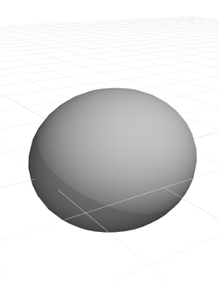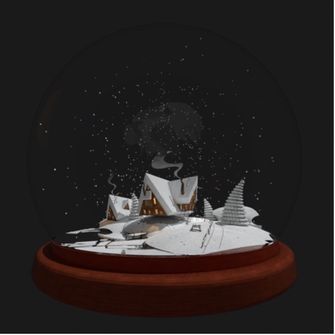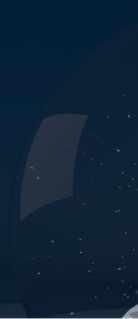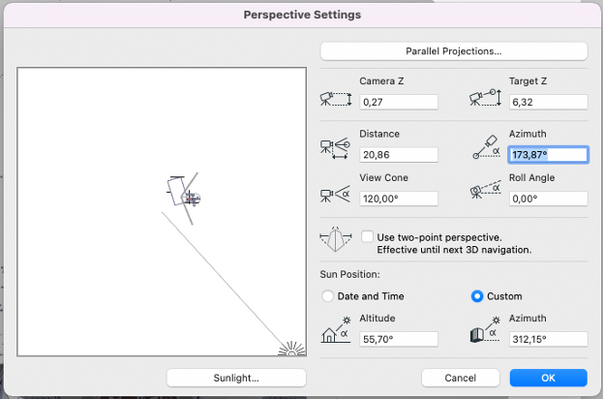- Graphisoft Community (INT)
- :
- Knowledge Base
- :
- Libraries & objects
- :
- Snow Globe series: Happy New Year by Bart Cuppens
- Subscribe to RSS Feed
- Mark as New
- Mark as Read
- Bookmark
- Subscribe to Topic
- Printer Friendly Page
- Report Inappropriate Content
Snow Globe series: Happy New Year by Bart Cuppens
- Subscribe to RSS Feed
- Mark as New
- Mark as Read
- Bookmark
- Subscribe to Topic
- Printer Friendly Page
- Report Inappropriate Content
on
2022-03-04
11:36 PM
- edited on
2024-12-04
03:12 PM
by
Aruzhan Ilaikova
Welcome to our series of articles from the Snow Globe Challenge!
We invited some of the participants of the challenge to elaborate on their entries, share their workflows and tips&tricks.
Enjoy and feel free to drop us a comment if you have any questions.
Let's learn how Bart Cuppens used PARAM-O to model his idea!
Klaus

The 3D model is largely based on the artwork from the Netflix movie "Klaus".
Modelling
The house is built with the basic tools of Archicad: walls, roofs, columns and beams. All walls and beams are slanted and not so well drawn as to give it a clumsy look. The snow is also modelled and is a copy of the underlying structure with a greater thickness.
The chimneys consist of several rectangular and round columns with a conical shape on top of each other.
 |
 |
The fence with the snow on it consists of different columns and beams. The snow may have only one pixel in the final image but it still provides some additional detail.
The cart tracks are curved walls by means of solid element operations cut out of the terrain >> 2 operations Intersection & substraction. The material is the same as the snow but slightly darker.
PARAM-O objects
The first goal was to use as many PARAM-O objects as possible. I had made some extra ones but in the end I only used 3. Some objects would be much harder to make without the add-on.
Ground and ice floes
 |
 |
This object appears several times in the model: both to create the hilly terrain and to fill up the background.
 |
 |
 |
The shape is a flattened sphere from which spheres of different size and shape are cut.

In blue, the larger sphere where you can adjust the diameter and height; in green, the various spheres around it, their position being determined by the radius of the larger sphere. In pink the settings for flattening the whole object and in yellow the rotation of the final object.
Trees
The trees are the most complex element. For this I made two param- o objects. The first is a ring of triangles that will form the leaves.
 |
 |
This shape has 4 parameters that are used in the final param-o object: the radius, the rotation, the number of leaves and the size of the leaves.

The final object makes copies of the ring and adjusts the 4 parameters. Thus, the ring and leaves become smaller towards the top and the number of leaves decreases.
 |
 |

Snow
The snow is also a param-o object based on a simple prism shape (reduce polycount). Which is copied randomly into the hemisphere.
 |
 |
 The diagram of the snow
The diagram of the snow- In yellow: the random dimensions of the snow with values between 0.02 and 0.04;
- In blue: the displacement over an arbitrary distance from the centre;
- In green: the rotation over an arbitrary angle with the centre as the rotation point. The y-rotation is limited from -180 to 0 so that there are snowflakes only in the upper part of the sphere.
Materials
I wanted to make the whole scene in archicad: both the model and the rendering. Because there are more settings possible in the cinerender, I used it.
In the whole scene there are only a few materials and they are quite simple.
Snow
The snow is actually the texture of plaster but with a bit more bump.
Ice
The most important thing about the ice is the bump map and the relfection. The ice reflects 100% but the bump map breaks the reflection slightly so that the seams become visible and the relfection becomes more diffuse.
Smoke
The smoke is a mapping of fog on a complex profile. In the alpha channel there is a gradient with a little turbulence so that the smoke seems to dissolve in the air.
 |
 |
Illumination
The lamps in the interior give the image more detail and warmth.
 No interior lights No interior lights |
 With interior lights With interior lights |
All lamps are light surfaces that are directed at the snow from the inside and cast light on it, providing shade.
 |
 |
Because the glass of the snowglobe was not very visible, I also placed a lamp that is visible in the reflection of the snowglobe.
Camera settings
I used a wide angle lens to get more into the sphere and to increase the perspective. The disadvantage of this was that the underside of the snowglobe looked very thick, so I adjusted this later.

Render settings
I tried a lot of settings to get to the final result. The first tests were with real clouds, but these were too distracting. In the end, I chose a background with a simple gradient of dark colours.
 |
 |
Final result:
Get to know Bart Cuppens:
Bart works as an architect in a firm of 50+ employees and teaches Bachelor students of first and second year at Hasselt University's Architecture school. He has many years of experience in architectural visualizations using Cinema 4D and V-Ray.
Location:
Diepenbeek, Belgium
Connections:
It seems like Bart is a low profile guy, but you can connect with him on LinkedIn.
Check out our series of articles about the Snow Globe designs
Buckminster Fuller Snow Globe by Heimo Mooslechner
Snowy Pasargad Snow Globe by Sepideh Kolahi
- Mark as Read
- Mark as New
- Bookmark
- Permalink
- Report Inappropriate Content
Great work and interesting article, I really like this work because it has a creative approach and a technical as well.
- Mark as Read
- Mark as New
- Bookmark
- Permalink
- Report Inappropriate Content
Those are some great techniques you used here and pretty cool design too!
- Graphic Overrides series: Color Zone By Size, by Bart Cuppens in Project data & BIM
- Graphic Overrides series: Structural Classification, by Josh Verran in Documentation
- Graphic Overrides series: Pieces from Conceptual to Developed Design, by Abraham Smith Merlos in Documentation
- Snow Globe series: Santa's SPA by Andrii Levko in Modeling











